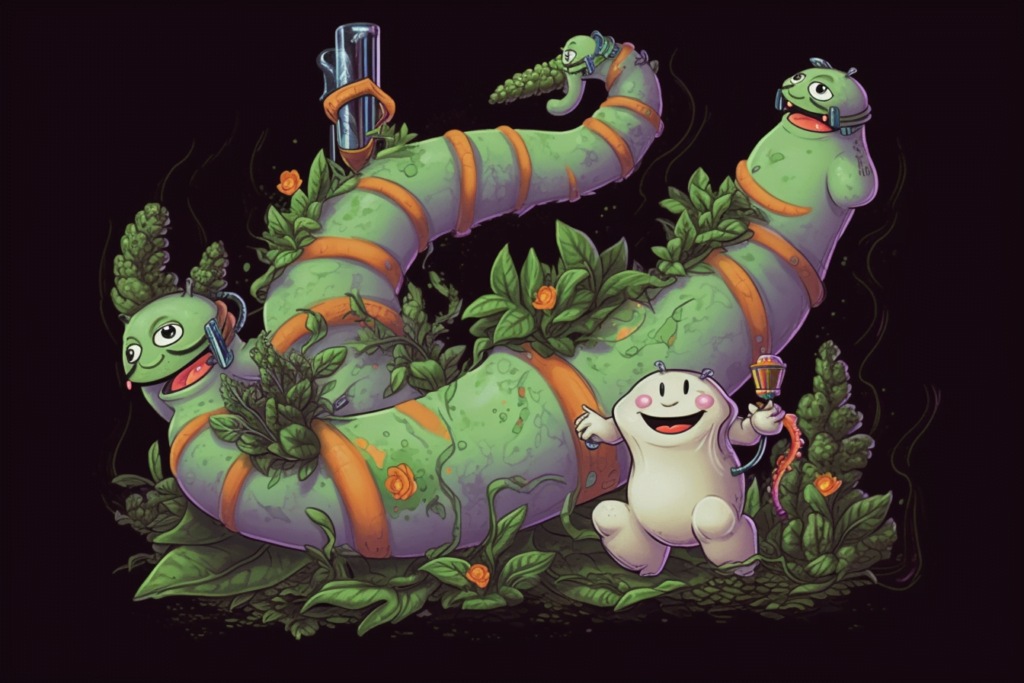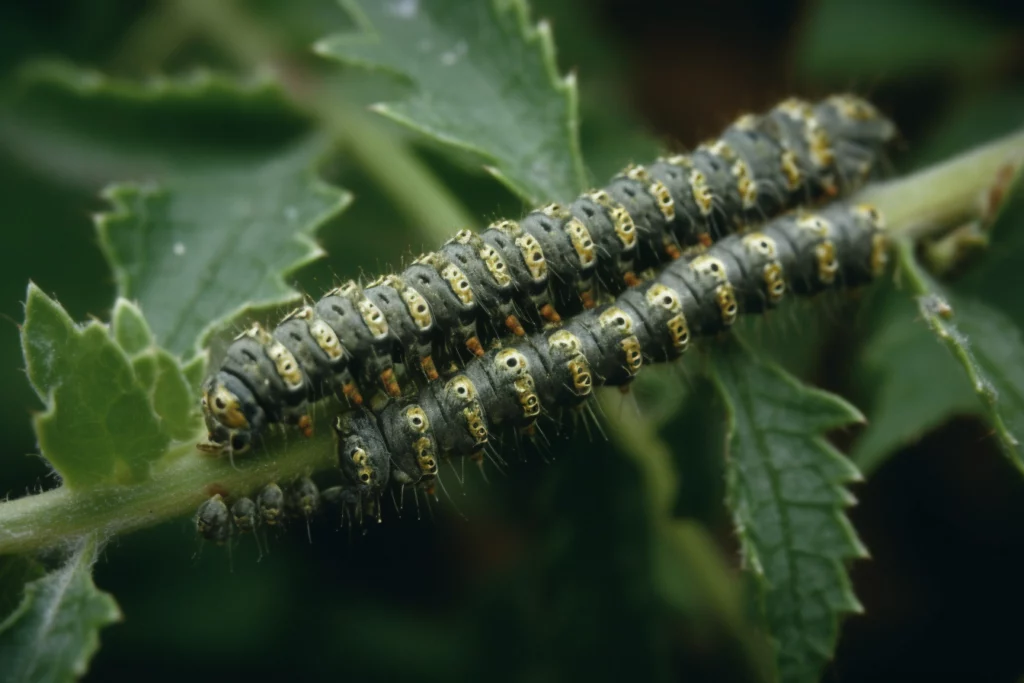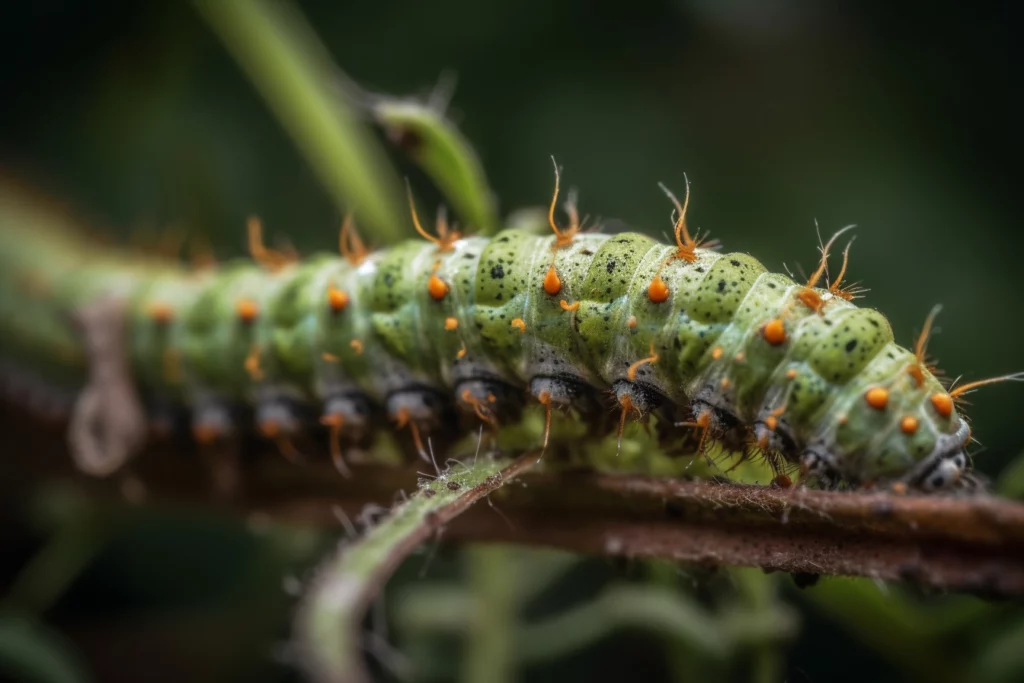English
Cannabis cultivation is an intricate dance between the farmer and nature. With the surge of interest in both recreational and medicinal marijuana use, cannabis growers face, an increasing number of challenges to keep their crops healthy and thriving. One such challenge is the persistent problem of caterpillars on cannabis.

Understanding the Cannabis and Caterpillar Conundrum
Caterpillars, the larval stage of butterflies and moths, are notorious for their appetites. Several species, including the corn earworm, cabbage looper, and budworm, have found an inviting feast in cannabis crops. Hidden deep within the buds, these pests can devastate cannabis yields, often going unnoticed until it’s too late.
The impact of caterpillars on cannabis goes beyond just the visible bite marks on the plant’s leaves and buds. The implications can be significantly more detrimental. Their feeding habits disrupt the plant’s photosynthesis process, weaken its overall health, and make it susceptible, to secondary infections like bud rot. Furthermore, the presence of caterpillars and their droppings reduces the aesthetic, and potential medicinal value of cannabis, making it less marketable.
Preventing Caterpillar Infestations: A Key to Cannabis Crop Protection
An ounce of prevention is worth a pound of cure, especially when it comes to caterpillars in cannabis cultivation. To protect their crops, growers need to implement proactive measures designed to keep these pests at bay.
- Regular Inspections: Regularly checking cannabis plants, especially the underside of leaves where eggs are often laid, can lead to early detection and control of caterpillar infestations.
- Use of Organic Pesticides: Employing organic ones, like Bacillus thuringiensis (Bt), can serve as an effective biological control of caterpillars. The naturally occurring Bt bacterium is lethal to caterpillars, yet safe for humans, pets, and beneficial insects.
- Introducing Natural Predators: Leveraging the natural ecosystem by introducing predators of caterpillars, such as ladybugs, green lacewings, and parasitic wasps, can provide a sustainable solution for caterpillar control.
- Physical Removal: In cases of smaller infestations, manually removing and destroying caterpillars can be effective.
- Proper Sanitation Practices: Keeping the grow area clean and free of plant debris discourages pests from making a home in your crop.
The Crucial Role of Pest Management in Cannabis Cultivation
A comprehensive pest management plan is a non-negotiable aspect of successful cannabis cultivation. Growers must get known themselves with the lifecycle and behaviors of pests like caterpillars and adopt effective strategies to address infestations.
But pest management in cannabis cultivation isn’t just about reactive measures. Preventive strategies like proper cleaning practices. Creating a healthy growing environment, and even using resistant cannabis strains, if available, are just as critical. It’s about finding the balance between prevention, timely action, and sustainable practices.
Wrapping Up
When it comes to cannabis and caterpillars, knowledge and proactive measures are a grower’s best defense. Understanding the impact of caterpillars on cannabis, implementing strategies for preventing caterpillar infestations are essential components of cannabis crop protection.
While these unwanted guests pose a significant challenge. They also serve as a reminder of the importance of sustainable, eco-friendly farming practices. As cannabis cultivation continues to evolve, growers are finding innovative ways to protect their crops. Ensuring the industry’s growth, quality, and safety. The fight against caterpillars on cannabis is just one of many battles on the frontlines of this industry. By engaging in informed, proactive pest management, growers can not only secure their crops, but also contribute to a healthier, greener future for cannabis cultivation.
Published by Tomas Zaoral
30/06/2023choose and buy cannabis seeds from our offer
our pleasure


























